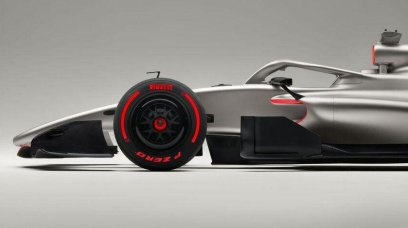Adrian Newey has explained how Red Bull was able to not be as affected as Mercedes or Ferrari by aerodynamic porpoising early on in Formula 1's ground-effects era After the technical regulations re-introduced ground effects to Grand Prix racing for the first time in over 40 years for the 2022 season, many teams struggled with porpoising.- or bouncing. For the floor to work as intended, the car needs to be run as low to the track as is possible, but should the car get oo low, it can stall, or lose downforce, rising back into the air as the cycle then repeats itself, leading to cars bouncing. Mercedes and Ferrari were particularly affected by porpoising, but Red Bull Chief Technical Officer Newey - who studied ground effects at university and worked with it in Indycar in the 1980s - was quick to find a solution for the RB18 machine.
Newey's ground effect solution
"The RB19 is clearly a very close evolution of the RB18," Newey told the F1 Beyond the Grid podcast. "The RB18 was conceived in a much shorter time than most, if not all of our rivals because in 2021 we were in the big championship battle with Mercedes and, possibly wrongly, because for the first time in many years we were in with a shout of the championship, we decided to put quite a lot of effort into developing that car through the year. "Ferrari, for instance, took the opposite approach, they weren't in the championship battle so they stopped developing their car very early on and got straight onto the design of the 2022 car. "Mercedes were somewhere in between that but we developed far longer than either of those teams, so theoretically that put us at a disadvantage. "But what we did manage to do was get the architecture right, so when the RB18 first came out in Bahrain last year, Ferrari was certainly as quick, if not quicker, in the early season. "We managed to get the fundamentals right and that gave us a good development platform." "We had an amount of bouncing - not as bad as some other teams - that we needed to get on top of and I think we had a reasonable understanding of what we needed to do to do that. "So come the first upgrade we had for the Bahrain race, then bouncing was much less of an issue than it was for most of the other teams and it meant we didn't have to put a lot of our development energy into fixing bouncing such as Ferrari and Mercedes did."
Most read







